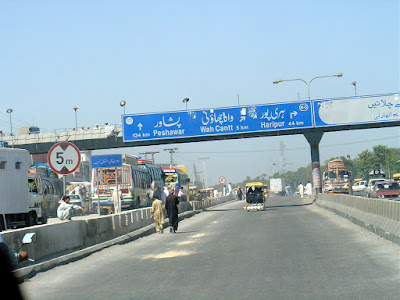Motorway Pakistan
Witness: “Pakistan is a Failed State? Then Try Pakistan Motorway”.
What comes to your mind about upper given quote that I have found while searching in the virtual world for my article on Pakistan Motorway? This is not said by a Pakistani, but said by a foreigner.
Introduction & Features
Pakistan Motorways are a network of high-speed, limited and controlled access highways in Pakistan, maintained and operated by the National Highway Authority and Motorway Police.
Pakistan Motorways are built with piece of art technology and constructed according to International standards that make the travel comfortable and enjoyable. To check the speed limits of vehicles advanced equipment with cameras are available and you cannot over speed your vehicle otherwise the motorway police will fine you. The controlling authority (Motorway police are highly educated and well trained and deals the visitors very gently. Telephones, petrol stations, and rest point are also available on these motorways for communication and resting the travelers while traveling.
In Pakistan there are ten motorways by which four are fully operational two are under construction and planning of remaining four have been finalized. Pakistan Motorways are planned and constructed according to the International laws and consist of four to six lanes with the universal minimum speed limit 0f 80 Km/h to 100 Km/h for heavy transport vehicles, and 120 Km/h for light transport. The four-lane Motorways can be up-grated to six lanes. Pakistan Motorways are especially designed and constructed for fast moving vehicles, slow moving vehicles and animal driven carriages are not allowed. The combined length of operational Motorways of Pakistan is 679.5 Km, while 278 Km is under construction and approximately 1200 Km further planned. Let’s discuss the four operational Motorways one by one.
M-1 (1997 – 2007)
It is in Punjab and Khyber-Pakhtunkhwa, Pakistan and 155 Km long with 108 Km in Khyber-Pakhtunkhwa and 67 Km in Punjab and become a central link to Afghanistan and Central Asia. It begins from northeast of Peshawar, after crossing over the Kabul River it passes through Charsadda, Sawabi, and Rashaki. It leaves Khyber-Pakhtunkhwa before crossing Indus River and enters into Punjab’s city Attock, ends at Hasan Abdal from where the state of art piece M2 Motorway starts. Travel from Peshawar to Punjab through that Motorway is very memorable and pleasurable due to its natural beauty that surrounded Motorway all the way. M1 has nine interchanges at Fatehang, Bhatar, Burhan, Rashaki, Swabi, Chachh, Charsadda.
History
Mr. Nawaz Sharif, Ex-Prime minister of Pakistan, conceived the M1.
M-2 (1992 – 1997)
The M-2 is constructed in the Punjab province of Pakistan, 367 Km long and while connecting Islamabd with Lahore passes through Kala Shah Kaku, Sheikhupura, Khanqah Dogran, Pindi Bhattian, Kot Momin, Kallar Kahar (A beautiful Picinic Spot), Balksar and Chakri before ending outside the twin cities Rawalpindi and Islamabad.
M2 is one of the most expensive motorways in Asia and has highest pillared-bridge in Asia at Khewra Range and also used by Pakistan Air Force to land or take off fighter jets at any emergeny. While travelling through M2 you did not find any type of uncomfirtability. There is no other motorway constructed in Sout Asia like M2, which is famous for its smoothness.
History
Mr. Nawaz Sharif, Ex-Prime minister of Pakistan, also conceived the M1
.
M-3 (1999 – 2003)
M3 link the city of Faisalabad (The Manchester of Pakistan) with the M2 motorway. M3 motorway is become an important link that connects southern Pakistan to the north. It is only 53 Km long a shortest motorway of Pakistan with two junctions. It starts from Pindi Bhattian (a small town situated at the junction between the M2 and M3) then passes southwest and ends in Chiniot a city located outside Faisalabad. After completion of this motorway, the travel from Faisalabad to Rwalpindi reduces to 3 hours from 8 hours and very beneficial for trade point of view.
History
M-3 was completed under the government of President Pervaiz Musharraf.
M-10 (2004 – 2007)
The M10 is located in Sindh province, Pakistan and known as Karachi Northern Bypass and 57 Km long. Start from Mohammad Ali Jinnah Road, near, M9 Junction that is connected through Trumpet interchange, then before turning west, forms an interchange with N25 and turns south back towards Karachi.
M-4 (2009)
M 4’s construction began in August 2009 and it is still in process. It is 233 Km long and joining two cities of Pakistan, Faisalabad and Multan.
M-8 (2004)
M8 is under construction and 892 Km long. It starts from Ratodero in Sindh province and enter Balochistan
Province.
Planned Motorways:
Project STATUS Major Cities
M5 Planned Multan – Dara Ghazi Khan
M6 Planned Dara Ghazi Khan – Ratodero
M7 Planned Dadu – Dureji- Hub














